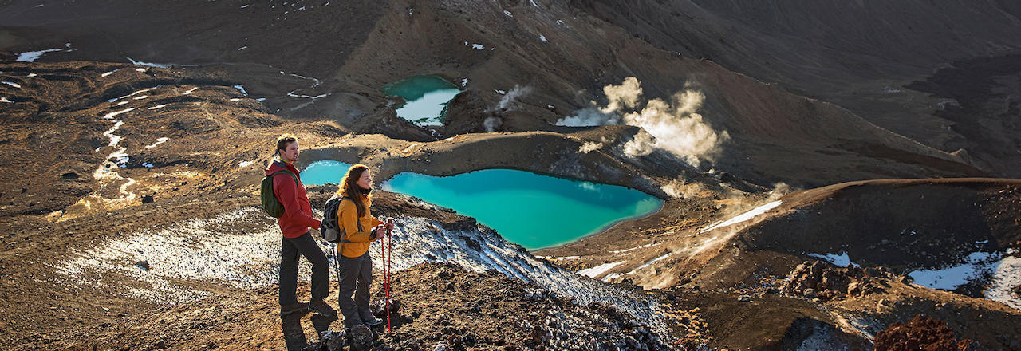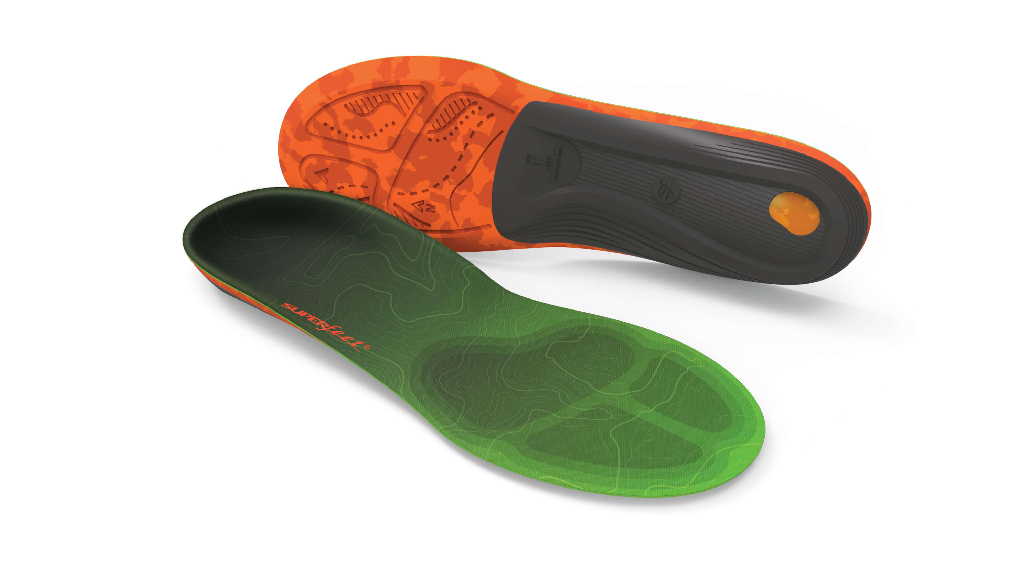Latest News
Share this post:
Learning to read that paper topo map (short for topographic map) is essential. Your map will then be able to tell you a richly detailed tale about the terrain and area you’ll be exploring.
This article covers these concepts:
-
-
-
-
- How contour lines let you visualise your terrain
- How map scales work
- Other useful map details
- Where to find topo maps
-
-
-
How Contour Lines Describe Terrain
Simple track maps are useful for trip planning but NOT for navigation in the field. Topographic maps go further, giving you the power to visualise three-dimensional terrain from a flat piece of paper. The feature that makes this possible is contour lines:
Contour lines indicate the steepness of terrain. Contour lines connect points that share the same elevation: Where they’re close together (they never intersect), elevation is changing rapidly in short distance and the terrain is steep. Where contour lines are wide apart, elevation is changing slowly, indicating a gentle slope.
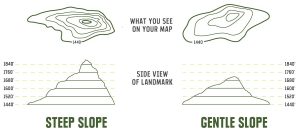
Contour lines also indicate the shape of the terrain. Roughly concentric circles are probably showing you a peak, and areas between peaks are passes. Studying a topo map of a familiar area is a great way to learn how to match terrain features with the contour lines on a map.

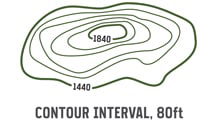 Index contour lines: Every fifth contour line is a thicker, “index” line. At some point along that line, its exact elevation is listed.
Index contour lines: Every fifth contour line is a thicker, “index” line. At some point along that line, its exact elevation is listed.
Contour interval: The change in elevation from one contour line to the next is always the same within the same map. Many maps have either a 40- or 80-foot contour interval: An 80-foot interval simply means that each contour line is 80 vertical feet away from the next closest line. You find the contour interval for your map in its legend.
 Every once in a while, a circle indicates a depression rather than a peak. A circle with tick marks inside it indicates a depression, rather than a peak. You should also see elevations decreasing as you get near the depression.
Every once in a while, a circle indicates a depression rather than a peak. A circle with tick marks inside it indicates a depression, rather than a peak. You should also see elevations decreasing as you get near the depression.
Map Scales
The map’s scale tells you how detailed your map is. A 1:24000 scale, for example, means one inch equals 24,000 inches in reality. A larger scale, like 1:65,000, means that a map covers a larger area, but that it will have less detail.

Maps also have a representative scale to help you visualise real-world distances. You can use this scale and a string or the edge of your compass to get a rough estimate about hiking distances on your map.
Other Useful Map Details
Look closely at the map legend. It’s loaded with map-reading clues and navigational data. Start by studying what each line, symbol and colour means. Generally, green indicates denser vegetation, while light or colourless areas suggest open terrain. And, as you’d expect, streams and lakes are shown in blue.
The legend also lists key data like the map’s scale, contour- and index-line intervals, grid systems (used for more advanced navigation) and magnetic declination (needed to set up your compass).
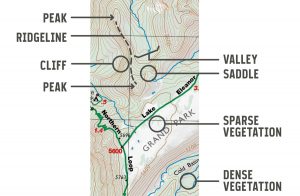
Practice reading features from a map of a familiar area. Visualise how the terrain on the major landmarks relates to the contour lines on your map. Pick out features like peaks and saddles. Identify subtler features like cliffs, which have contour lines grouped tightly together, and ridge lines, which connect peaks and have contour lines that decrease in elevation on each side. Valleys are low-elevation areas between ridge lines; some might have a creek running along the bottom, though that isn’t a requirement for a feature to be a valley.
Hone your map-reading skills on every trip. Pull it out at the start of your walk, orient it correctly and mentally check off landmarks as you walk. Regular map readers rarely get lost.
Where To Get Topo Maps
Maps from Specialty Companies
Several companies produce enhanced topographic maps. They highlight key features and update details regularly. These maps are more likely to be available for popular areas. (Finding a map for a lesser-known area will be more difficult.)
Additional features that can make a map more valuable include:
-
-
-
-
- Highlighted tracks
- Elevation callouts
- Distances between track junctions and landmarks
- Primitive tracks
- Backcountry campsites
- Springs
- Highlighted boundary lines
-
-
-
Local Maps
Many public land areas (national parks, national forests, recreational areas) produce maps to cover the land inside their boundaries. Check their websites to see if they offer printed or downloadable topographic maps for backcountry users.


 Collecting and Propagating Seeds
Collecting and Propagating Seeds China on a Plate: The Flavours of a Nation (with a Spotlight on Sichuan)
China on a Plate: The Flavours of a Nation (with a Spotlight on Sichuan) Kinesiology Cross Patches
Kinesiology Cross Patches Camaraderie On a Walking Tour…
Camaraderie On a Walking Tour…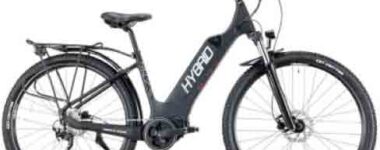 How E-Biking Has Transformed Biking Tours
How E-Biking Has Transformed Biking Tours